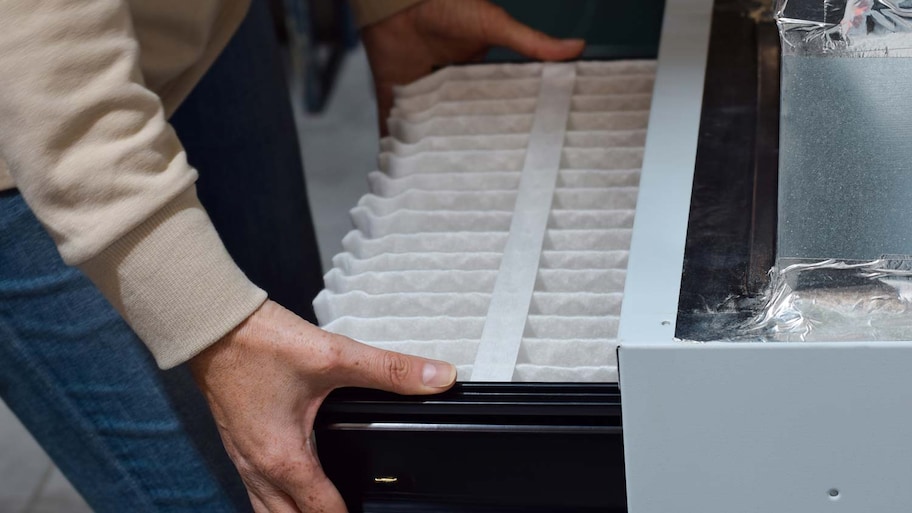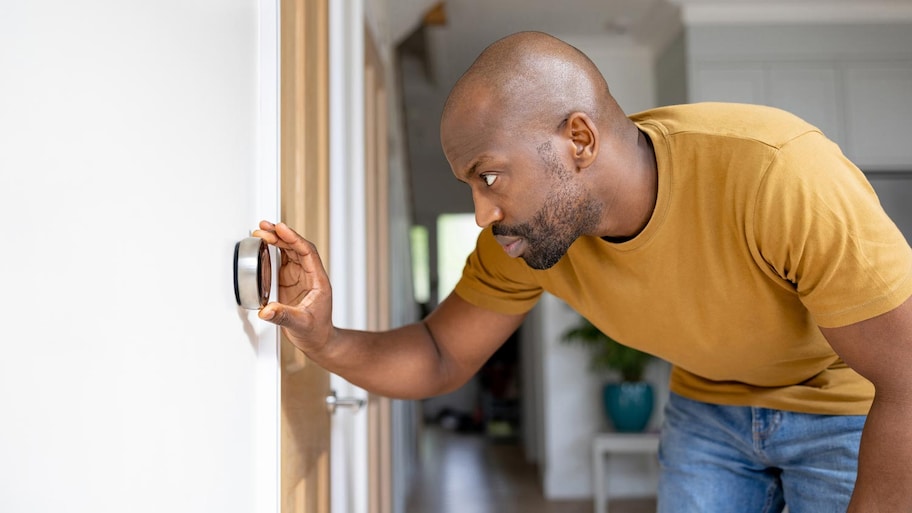12 Common Furnace Problems and What You Should Do to Solve Them
Furnace issues aren’t likely to blow over on their own


Highlights
Furnaces are complex systems with many parts that can break down.
Common furnace problems include failing pilot lights and thermostats.
Some issues, like frequent cycling or clogged filters, can lead to higher utility bills.
A cracked heat exchanger is particularly dangerous and needs immediate attention.
Call a furnace repair company if you suspect any furnace problems.
No one wants to be surprised with a sky-high energy bill or a furnace that goes “bump” in the night. Yet furnaces, for all the cozy warmth they provide, can also be menacing in the number of issues they can have. Regular cleanings and inspections can help prevent many common furnace problems, but over time, all furnaces will experience some wear and tear. When that time comes, watch (and listen) for these 12 common furnace problems.
1. Malfunctioning Furnace Thermostat
There are several potential furnace thermostat problems to watch out for, such as a thermostat that won’t maintain its programming or that incorrectly reads the room temperature, causing the furnace to shut off or turn on when it isn’t needed.
The thermostat may malfunction for a variety of reasons. Dirt buildup can prevent the thermostat from determining the room temperature, or it can make it harder to operate the control panel. You may be able to solve this issue on your own by dusting the thermostat and using a small object, like a soft paintbrush or unused toothbrush, to clean between the buttons.
Dead batteries may also cause the thermostat, and the furnace, to shut off. If your thermostat uses batteries, you should replace them at least once per year.
Loose electrical wires and improperly installed thermostats can also prevent the furnace from warming your home to your ideal, set temperature, but these aren’t issues you should try to fix on your own. You’ll need to hire a local furnace repair company to take a look.
2. Faulty Furnace Relay Switch
The relay switch is an important part of a furnace’s blower motor, which takes hot air from the furnace and directs it to the blower fans and through the air ducts. If the relay switch becomes worn out, corroded, or overheated, it will either stop switching or stick, causing the motor to continue running.
If you’re dealing with a furnace relay switch problem, you need to have a furnace repair contractor repair or replace the relay as soon as possible. Aside from ensuring the furnace runs properly, the relay switch also protects the blower motor from electrical surges. When it isn’t working as intended, the furnace system faces risk of electrical damage.
3. Dirty Filters

Did you know your furnace has a filter, and you should be changing that filter at least every 90 days? If this is all news to you and you notice your furnace isn’t quite heating up your home like it used to, the problem could be a clogged filter. You may also notice higher heating bills, since dirty furnace filters mean the HVAC system has to work harder to move heat through the home.
Luckily, replacing a furnace filter is easy to DIY. It only takes a few minutes, and the new filter will cost you about $1 to $35. This should be part of your regular HVAC maintenance to keep the system running efficiently and keep utility bills in check.
4. Failing Pilot Light
Not all types of furnaces have a pilot light. Older furnaces may have a pilot light, while newer models usually have an electrical ignition. Both can fail.
The pilot light should emit a blue flame, which may also have a bit of yellow or red at the tip of the flame. If the pilot light is a different color, it may mean there is too much carbon monoxide in the furnace, or other components, like dirt, may be burning. These scenarios can be dangerous, so make sure to have an HVAC professional come check the pilot light as soon as possible.
The pilot light may go out entirely if there is a draft. Call a pro to test the pilot light and make any necessary repairs. Whether the pilot light is out or still burning, if it emits a weird smell similar to rotten eggs, turn off the furnace, leave the house, and call emergency services.
If the electrical ignition isn’t working, it may be too old and require replacing, or you may just need to have an expert come in to deep clean the furnace system.
5. Worn Out Blower Bearings
The furnace blower motor has bearings, which naturally wear down over time. Although the bearings and the blower motor should last the life span of the furnace, or about 15 to 20 years, they may wear out sooner without proper furnace maintenance.
When the bearings wear out, they will make a scraping sound. When this happens, turn off the furnace and have a furnace repair pro come to replace the bearings.
6. Frayed Blower Belt
Similar to bearings issues, the blower motor can also sustain damage to its belt over time. The belt might slip, causing a misalignment. While this is an easy fix for a pro, it’s not something you should attempt to solve on your own.
Aside from simply slipping out of line, the belt may fray or break. This will result in a loud, high-pitched squeaking sound coming from the furnace. Again, this is a job best left to the professionals.
7. Cracked Heat Exchanger

A cracked heat exchanger is one of the more expensive furnace problems to resolve, but it’s also extremely important to have a professional fix this issue right away. This part is responsible for heating the air that will blow through your air ducts, but when the heat exchanger breaks, it can cause dangerous gas leaks.
One sign of a cracked heat exchanger is unheated air blowing through the vents. The pilot light may change colors if the heat exchanger is busted, or the furnace may produce a continuous rattling or banging sound.
8. Odd Noises
Furnaces make noises from time to time. Some of these noises are completely normal, like a faint hum from the running fans or a click when the ignition system starts the furnace.
But popping, banging, rattling, squealing, loud humming, grinding, or scraping noises should raise a red flag. Different problems can lead to various noises; for example, worn-out ball bearings might cause a metal scraping sound, but they can also create a grinding sound. But a grinding sound may also signal a broken blower fan.
Because furnace systems are so complex, if you hear any abnormal noises, it’s best to have a furnace repair company inspect the system to identify the source.
9. Tripped Circuit Breaker
The furnace may trip the circuit breaker, especially when it is working inefficiently. For example, when the furnace is dirty or clogged with debris, it works harder to push warm air through the home to meet the programmed temperature on the thermostat. This means it will draw more power, which can lead to a tripped circuit breaker.
If the furnace shares a circuit breaker with other appliances and devices that draw a lot of power, it can also cause electrical issues.
You can reset the circuit breaker, but if it trips multiple times, it’s best to hire an electrician to investigate. It may or may not be a furnace problem; there could be issues with the circuit breaker or other parts of the electrical system, and this isn’t safe for the average person to try to fix.
10. Lack of Heat or Air
"Two repairmen arrived within 3 hours of my call, diagnosed the problem within 10 minutes (the temperature limiter inside the unit had failed, so it wouldn't allow the unit to heat), found a parts supplier close by, picked up the part, came back and replaced it, and had my unit working again within 2 hours."
- Elliott K., Angi customer from New York, New York
You don’t want to come in from a snowy outdoor walk to a home that’s barely warmer than the outdoor temperature. When the furnace isn’t blowing hot air at all, it could be a sign of several different furnace problems. The thermostat could be malfunctioning, the filters might need to be changed, or the furnace system just might not be large enough for your home.
Because a furnace that fails to blow out hot air could have any number of things going wrong inside its complex system, this is another instance where the expertise of a furnace repair person is essential.
11. Frequent Cycling

If your furnace is clicking on and off constantly, you may need to change the temperature setting on your thermostat. If the temperature is set too high or low, the furnace will turn on and off frequently to try to get the room to the set temperature. Keep the thermostat set between 60 degrees Fahrenheit and 80 degrees Fahrenheit for best results.
Aside from the temperature set on the thermostat, a clogged filter can also lead to frequent cycling. If resetting the temperature doesn’t fix it, try changing the filter. If that still doesn’t work, it’s time to call in the pros.
12. Continuous Running
While you don’t want the furnace to kick on and off constantly, you also don’t want the furnace to run continuously. That non-stop low hum of the fans also sounds like a hefty energy bill. A continuously running furnace may be a sign of a malfunctioning limit switch, and this could lead to overheating in the system. An HVAC professional will need to replace the limit switch to fix this issue.
